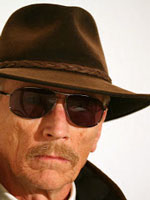
If you stay within your choice of camera brand there is little reason to pay much attention to a small detail called a lens mount. It is a handy little feature that lets you easily and quickly change the lens, should you want to. Most manufacturers have their own designs, maybe several, to fit different categories of their cameras. These lens mounts are many times protected by more patents than any other part of the camera. Why? To keep unwanted competition from manufacturing lenses for your cameras, or cameras for your lenses, without the camera manufacturers permission.
To grant this right OEM camera manufacturers enter into water tight agreements with third party manufacturers controlling essentially every step of the way, or at least trying to. In time a camera manufacturer accumulates a large stable of camera designs and associated lenses, plus access to well chosen third party lenses and accessories, all based on form, fit and functions conforming to the camera manufacturers specifications and patents.
Then comes Sony and screws everything up.
Sony says, “Look at our new image sensors. They are better than yours.”
To prove their point Sony makes a few cameras and shows the public that Sony is telling the truth. What are girls like Canon and Nikon to do? Nikon said, “Buy the damn thing.” Make the best DSLR cameras the consumer has ever seen, with a Sony image sensor inside.
Now all is well. For a while.
Then Sony says, “By the way, you don’t need that big mirror flopping around inside your camera. Now that you use our digital image sensors we can show you what the camera sees if you look in our new electronic view finder. No mirror, no mirror actuator, no secondary or tertiary light paths, no secondary light metering, no tertiary autofocus sensor and no micro adjustments, no pentaprism. Just a full-frame mirrorless camera.”

Well of course, Nikon has the Nikon F lens mount, well patented and protected. Not to speak of the 90 million interchangeable Nikon lenses already in the hands of Nikon users, most of which are Nikon F mount lenses.
There is only one problem. The advantage of the mirrorless camera is not just the mechanical simplicity but also the potential to make the camera smaller and lighter by moving the lens closer to the image plane since there is now no mirror swinging in and out of the way any more.
Camera Chaos Coming
The Nikon F mount has a 44mm throat and a 46.5mm flange distance. A mirrorless full-frame camera with a Nikon F mount would be an awkward looking camera with a protruding lens, compared to a full-frame mirrorless camera designed from scratch with a shorter flange distance.
Should Nikon put out an awkward looking full-frame mirrorless camera simply to cater to Nikon F mount lens owners? Or should Nikon start from scratch with an optimized design requiring a new lens mount and all new lenses? Or should Nikon do the latter and design the new lens mount such that they can provide an adapter for use with F mount lenses?
Conceptually, the last option sounds like it offers the most flexibility, though it has one problem. It requires a large throat on the new mount, to clear the light path of an F mount lens on adapter. Modern, large aperture lenses are getting fatter. So a large diameter lens mount is not necessarily out of the question, and would definitely provide the most rigidity and flexibility. However, a year or two before this is ready to happen I would expect to see the photography rumor mill reporting about new Nikon patents for a new lens mount.
Meanwhile, what is Canon doing? Rumors have it that Canon will be introducing a full-frame camera with a new 53MP Bayer sensor; an extrapolation of an existing APSC sensor into full-frame format. Meanwhile there is talk about a 48MP full-frame sensor from Sony to first show up in a Sony camera and later at Nikon.
Canon’s best lenses are presently not capable of matching a 53MP sensor. It seams that Canon is leisurely watching the technological changes creeping into the industry. However, this might still work out for Canon since their approach seems to be to take minimum risk: to follow and build something almost as good as Sony and Nikon and sell on price rather than on perfectionism.
The question in my mind is whether these new-high resolution cameras will be the last of the DSLRs, or the first of the new generation full-frame mirrorless cameras with a shorter flange distance, new lens mounts, brand new lines of high-resolution lenses and quiet electronic shutters.
There are certainly interesting camera times ahead.


